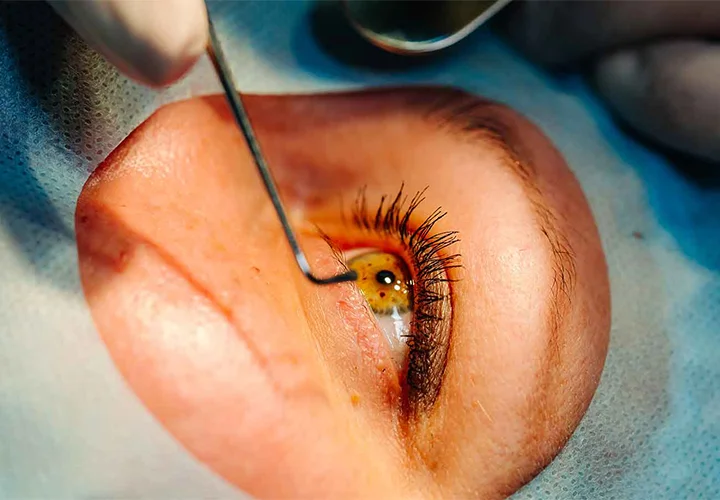The retina is the innermost layer of the eye which detects shape, color, and pattern, while the outer side of the retina is attached to the choroid or middle layer, which has nerve fibers bundled together into the optic nerve, which relays information to the brain. Retinal detachment surgery is a critical procedure most super-specialty hospitals provide to prevent blindness by reattaching the retina to the back of the eye. This blog details everything you need to know about the surgery:
What is Retinal Detachment?
Retinal detachment is a serious eye condition that occurs when the retina pulls away from the surrounding tissues, which supplies it with oxygen and nutrients. If not immediately treated, it may lead to vision loss. Some symptoms of the condition are flashing lights, showers of dark floaters, and blurred vision.
What Are The Types of Surgery?
There are several surgical approaches to treating retinal detachment, including:
Scleral Buckling: A piece of silicone rubber is sewn onto the sclera or the outer part of the eye to push the eye-wall back onto the retina.
Vitrectomy: The vitreous inside the eye is removed and the eye is filled with gas or silicone oil to reattach the retina back into place.
Pneumatic Retinopexy: A gas bubble is inserted into the eye to push the retina back into place and the tear is sealed using cryotherapy or laser.
How To Prepare?
Retinal reattachment can be done as an emergency surgery. Remember to inform your doctor of any medication that you are under at the time of surgery.
What is The Procedure?
This is the simplest procedure for retinal detachment repair that can be done in an ophthalmologist’s office. It is typically performed under local or general anaesthesia, where the surgeon will make small incisions in the eye to insert a gas bubble into the vitreous cavity, which presses the retina flat against the wall of the eye, and the laser tear is fixed by cryopexy. The bubble disappears within the next couple of days.
What is The Recovery Process Like?
Immediately after the surgery, we advise patients to stay overnight at the hospital. Additionally, we cover the eye with an eye pad or a protective shield for a few days. It may take from a couple of weeks to a few months for your vision to completely recover to its usual state.
What Are The Risks Involved?
While most surgeries are a success, some face a few risks and complications depending on the procedure used, including cataract formation, glaucoma, infection, haemorrhage into the vitreous cavity, and vision loss.
Considering the severity of the condition, it is always recommended that patients facing such symptoms approach an ophthalmologist for medical attention. As the best eye hospital in Nagercoil, it is our priority to provide you with all the necessary tests and consultants so that you can choose the best option for yourself. Contact us today to book an appointment with our dedicated medical professionals.


